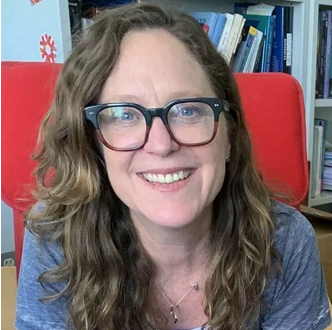For Drs. Belinda Heyne and Rachel Lauer, both PhD, these hidden worlds are part of their everyday research research with the potential to have very visible impact.
Both will be presenting their work at the TEDx event FLOW: Connecting the dots... on May 10.
Hidden threats: Belinda Heyne
In medieval times, the smallest wound could put your life at risk. Luckily, today we have antibiotics and disinfectants to protect us against microbes invisible to the human eye like viruses, bacteria and fungi. However, Heyne, a photochemist and head of the Department of Chemistry in the Faculty of Science, says microbes are building resistance and if other solutions are not found by 2050, a mishap at the cutting board could once again become fatal.
"We have a very narrow window for us to take action," says Heyne. "We need to find methods for us to control those infections and for us to combat antimicrobial resistance."
Heyne is developing a "weapon" using just visible light and oxygen to kill microbes without increasing their resistance. Her technology is a novel application of a long-ago concept, dating back as far as ancient Greek times. "They didn't know what they were doing, but they knew that it was working," says Heyne.

Belinda Heyne // Photo Credit: Riley Brandt
During the COVID-19 pandemic, Heyne was part of an international and multidisciplinary team and was able to use this method to create a spray for masks to kill microbes. This same strategy could be used to create gels to rub on wounds and combat infection. You would not need the sun's rays or a special light for this to work, Heyne adds; it could be as simple as shining your phone flashlight on the area.
One of the challenges Heyne faces as she advocates for the necessity of technology like this is that people can't see the microbes, so they have trouble seeing how pressing an issue it is.
"Very often, people are not thinking about that and this is where it is problematic because even governments don't see this as a big issue," says Heyne. "If we do nothing by 2050, it is speculated that 10 million people are going to die every year from a resistant infection. This number is equivalent to the number of people dying of cancer today."
Heyne hopes her work will inspire young girls to get into STEM (science, technology, engineering, mathematics) fields. "I feel that very often girls don't necessarily join STEM because they don't see how what they are doing can make an impact. But in fact, you never know what can happen, and the potential for impact is massive" she says.
Hidden below: Rachel Lauer
More than three-and-a-half kilometres below sea level is a world of complete darkness that very few humans have seen and on which very little research has been done. Lauer, an associate professor in the Department of Earth, Energy and Environment and a hydrogeologist, is one of the few who has been able to take a submarine trip down to experience it first-hand. As a result of her unique deep-water discoveries, she hopes her research can be used in advocacy to protect the ocean floor.

Rachel Lauer // Photo Credit: Rachel Lauer
Lauer's research is focused on hydrothermal circulation, a process in which water moves from the ocean into the ocean crust, picking up heat and solutes, and then emerges somewhere else. The process is important for organisms living in and on the crust, and the process itself influences the chemistry of our oceans. As the study of this process involves many disciplines, Lauer wants to advocate for more transdisciplinary work in science.
A focus of Lauer's work is where warm water exits the crust, as these locations are potentially home to biodiverse hot spots, including coral that has been growing for thousands of years.
"These warm water exits are basically little mountains on the seafloor," says Lauer. "They poke up through the sediments and provide these pathways for water to go in one place and come out the other."
This is unique, as most of the sea floor does not actually have much on it other than sediment; as a result, these areas around the warm water exits provide attachment points for different ocean creatures. In particular, Lauer recently discovered that colonies of octopus tended to gather near them.
Lauer's research has so far led her to sail the Pacific coastal waters of Canada, Japan, New Zealand, Costa Rica and the United States. As a result of the habitats discovered on the ocean floor, she says it is crucial to protect these areas from activities such as deep-sea mining.
"We know there is an abundance of marine life, and we know that these little mountains, these structures, are all connected, and that enables us to protect larger parts of the sea floor which is important for any number of reasons," says Lauer, adding only five per cent of the ocean floor has been explored and needs to be protected before we destroy it without even realizing what the consequences are.
"(We need to) ensure that the ocean continues sequestering CO2 (carbon dioxide) and 90 per cent of the warming that we have experienced," says Lauer. "(We need) to ensure that the ocean is a central character in thinking about our life and how we live it even here in the Prairies."
The TEDx event FLOW: Connecting the Dots will be held on May 10 from 1 to 6 p.m. at the Ampersand. For more information, visit the web page.









